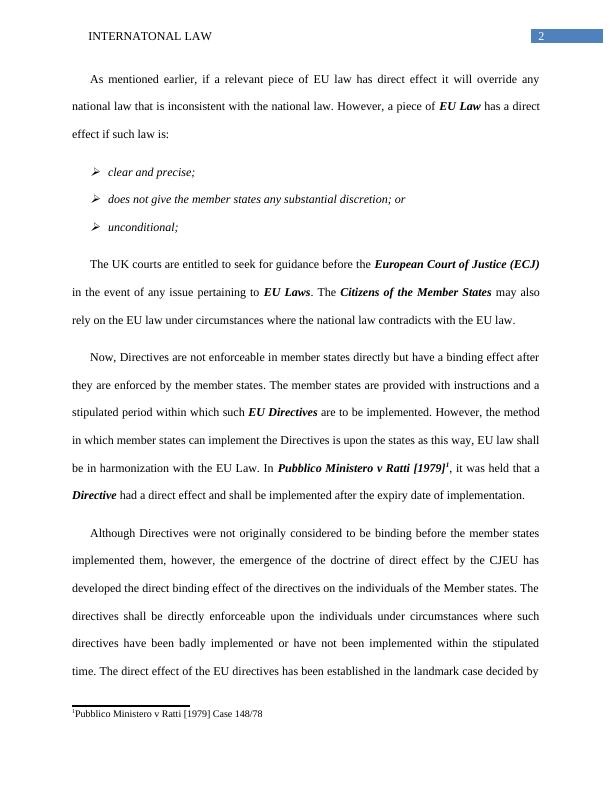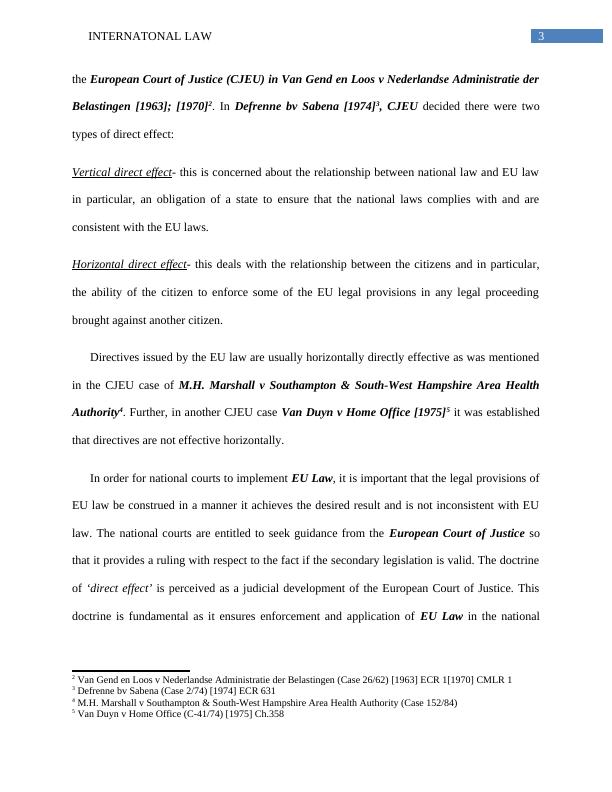Direct Effect and Indirect Effect of EU Law in UK Courts
Coursework on the implementation of Directive No 2015/224 regarding asylum seeking minors' needs and the concepts of direct effect, indirect effect, and State liability in EU Law.
15 Pages4215 Words338 Views
Added on 2023-06-15
About This Document
This article discusses the direct and indirect effect of EU law in UK courts, specifically in relation to unaccompanied minors seeking asylum. It covers the definition of minors and unaccompanied minors, the implementation of EU directives, state liability, and more.
Direct Effect and Indirect Effect of EU Law in UK Courts
Coursework on the implementation of Directive No 2015/224 regarding asylum seeking minors' needs and the concepts of direct effect, indirect effect, and State liability in EU Law.
Added on 2023-06-15
ShareRelated Documents
End of preview
Want to access all the pages? Upload your documents or become a member.




